Don't waste time fretting over a plant like potatoes. They have a few basic needs, but are otherwise tough as nails. You can put a bunch of potato parts (trimmed from the potatoes you're eating for dinner) in the vegetable bed. You can forget about them, even layer your veggie bed with plastic bags, mulch and newly planted vegetables. Like a good weed, the potatoes can surprise you by pushing aside the bags...and the mulch...and the other veggies. They may flourish and you'll get to eat potatoes.
What Root Crops Really Need
1. They need rich, somewhat loose soil. Any type of root crop really needs room to move and grow in the soil. If you don't have loose soil, buy cheap potting soil, a bag of builder's sand (not sandbox sand) and mix the two with your leftover eggshells and coffee grounds. Plant potatoes in piles of the mix or in a pot and watch the magic happen.
2. They need sun. Some plants grow well in shade -- potatoes are not one of them. They will reach towards the light and get spindly. Your harvest won't be great. Give them a little sun and they'll give you a lot of potatoes.
3. Water. If you live in an area with decent rainfall, they should do just fine on their own. If you live in a desert, they'll need a little extra water.
DON'T MAKE IT DIFFICULT. This goes for potatoes, chives, onions, asparagus, peony and bulbs like tulips, daffodils, dahlias & gladiolus. Any plant that is concentrated on growing a root or bulb are easy to grow, but easy to drown. Get the plant in decent soil and spend the bulk of your time figuring out the best place for your plant to grow based on sun needs. Then LEAVE it ALONE! Overwatering will kill these plants quicker than anything. Overfertilizing will make them grow too spindly. Over-pruning will put too much effort into leaves when you want the effort to go into the roots. LEAVE THEM ALONE.
Growing Potatoes From The Pantry
SO...it has been said that you can't plant potatoes from the grocery store because they are treated to stop them from sprouting. Even if they aren't sprouting yet, you can probably still plant potatoes from your pantry. They are treated to not sprout, but have you ever met a non-sprouting potato if you leave it long enough? It seems like they ALWAYS sprout. Take potatoes and cut them into pieces, making sure there is at least 1-2 buds on each one.

Well, this photo shows that these 7 cuts of a couple old sprouting pantry potatoes from the grocery store have turned into…
26 delicious yellow, thin skinned potatoes. They are tough tough puppies, and need some water, but otherwise will take care of sprouting themselves.
After they show up, you can wait a few weeks until mid summer, then dig up a few baby potatoes, or simply wait until the tops turn yellow and wither and then your full sized potatoes will be ready.
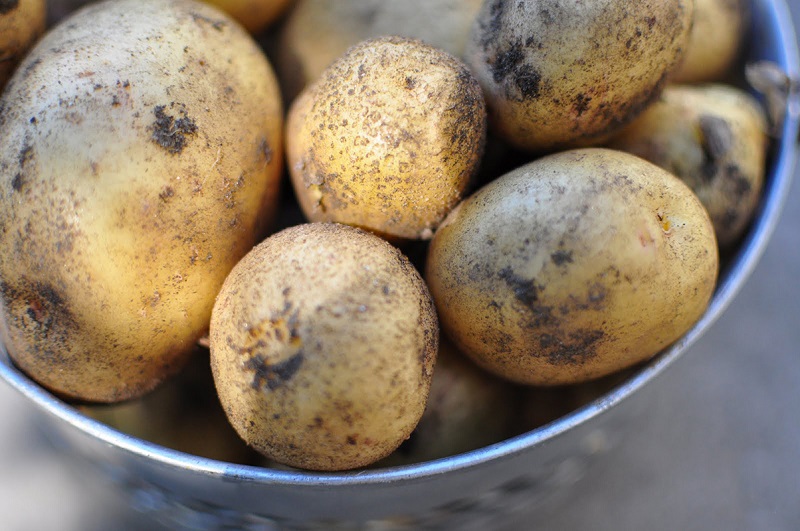
Don't they look yummy?

Don't they look free?
Speaking of free, this wonderful little pot was free along with a vintage French fry cutter
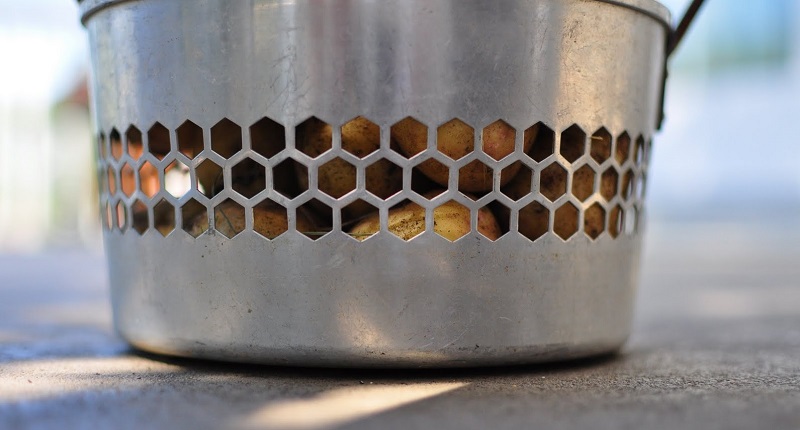
Harvesting these potatoes was a weird sort of fun. It was almost like treasure hunting, and if anyone ever tells you to use a shovel when harvesting root veggies, don't listen to them. Use your hands, dig in the dirt and giggle with delight when you find a bunch of potatoes hiding in the dirt. I know...weird...but seriously fun…
Look at that cluster of potatoes!
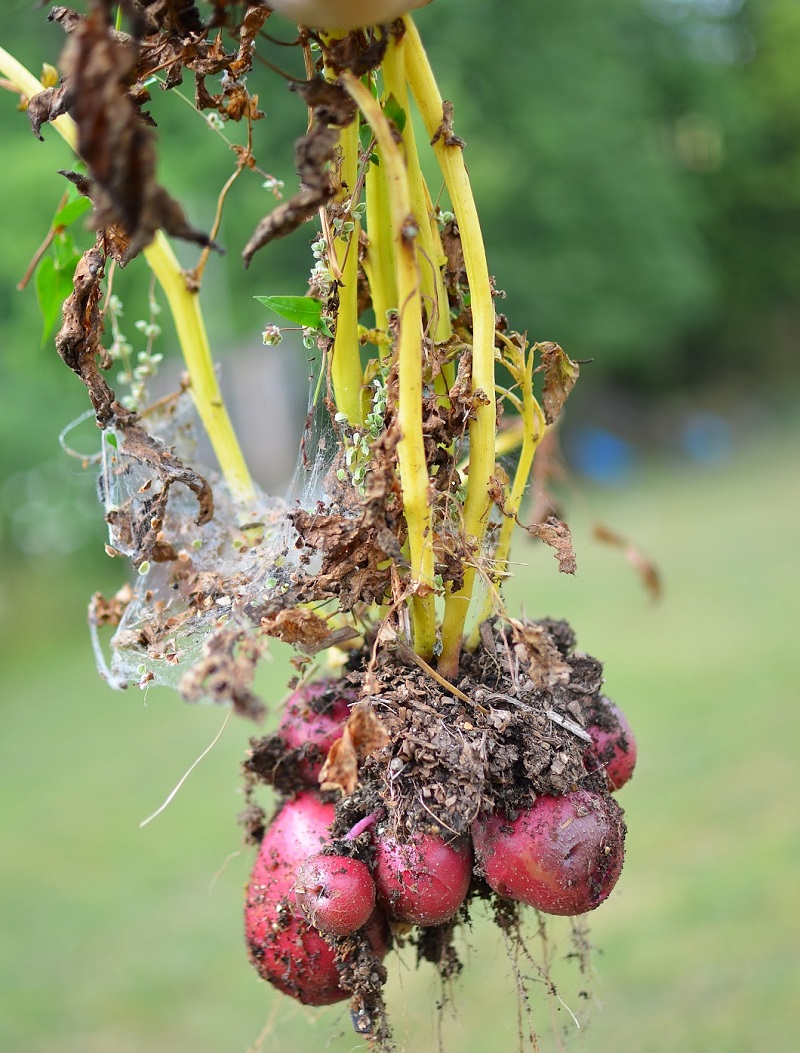
All that from one little slice of potato!
It was decidedly not beautiful, but very rewarding.
The potatoes form on the roots of the plant like this…
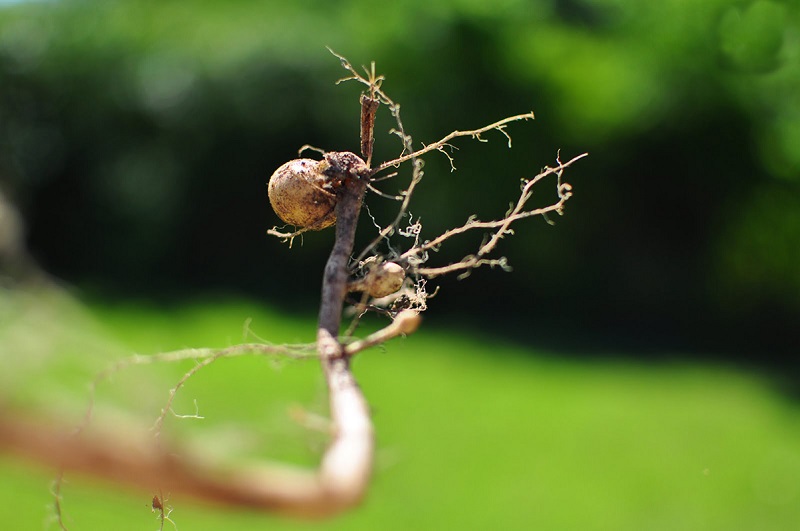
Underneath each plant, you can find 1-3 potatoes ranging in size from small fresh potatoes to good large potatoes. They all taste wonderful! Just make sure to cook the same-sized potatoes together or cut down the larger pieces so they cook evenly.
Here is an example of the smallest and largest potatoes harvested.
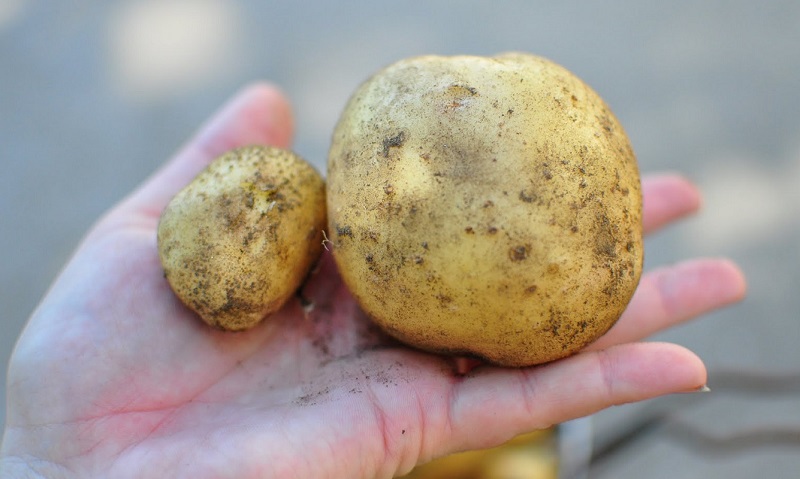
When To Harvest Potatoes
It is easy!! When they get brown and start shriveling up, they are ready to go!
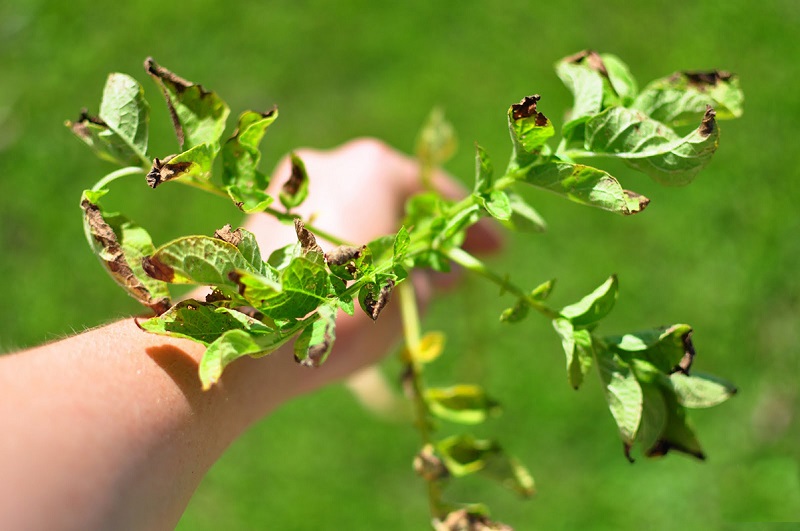
See those brown edges?
Some plants will be even further gone like this:
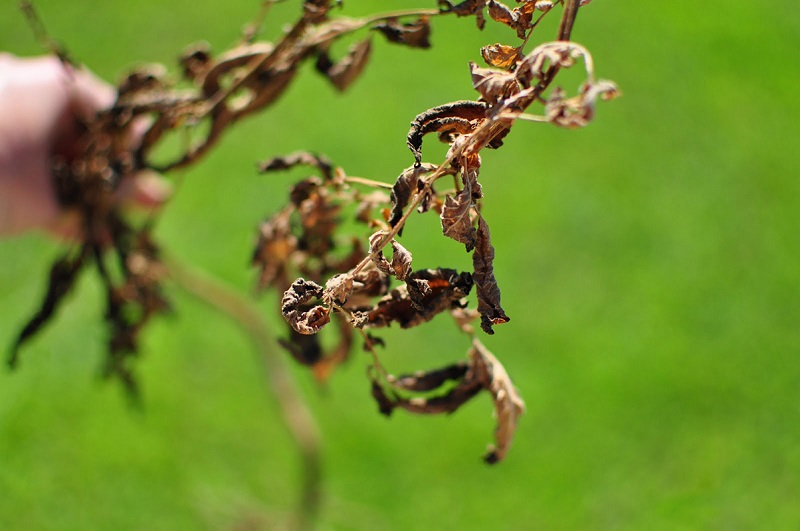
You have to wait until the potato stems have dried and almost completely withered before harvesting and it is an ugly sight.
After harvesting the buckets of potatoes from the garden, throw the stems in the compost and dig in. When cutting potatoes for a meal, leave any of the ends that have prominent buds. In this case, the buds have already started growing.

Leave those little pieces out so they dry a little and form a skin on the exposed cut. It takes just a day or two and then they are ready to plant. The only thing to watch out for is a moldy potato. Once in awhile you will get a few like this:
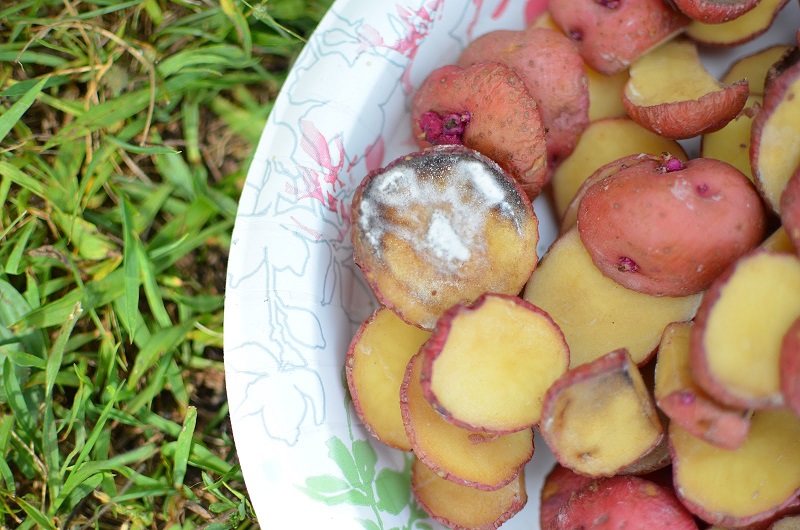
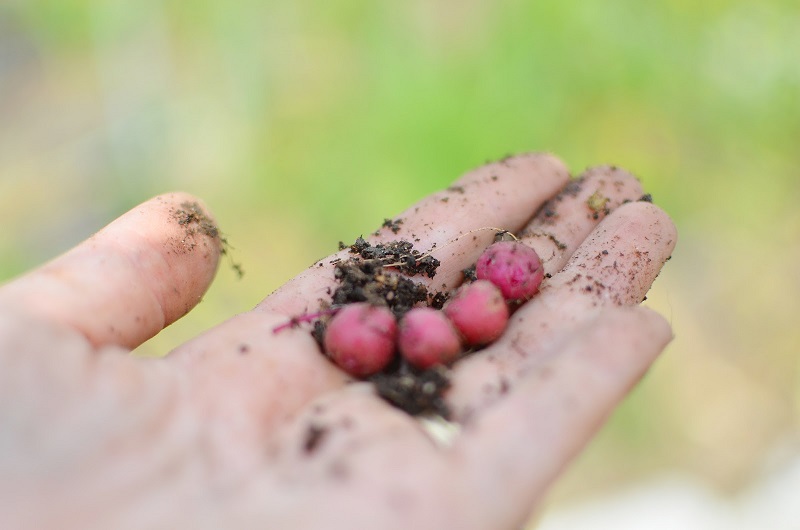
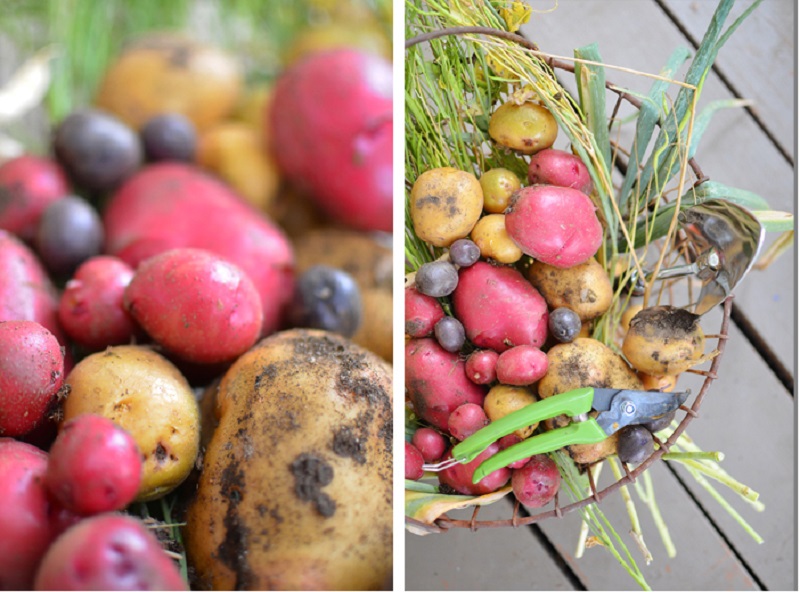
You only need a very small space to grow potatoes, but you do need soft, light soil. Don't waste your pantry potatoes, multiply them! 1 or 2 of these potatoes will get cut and placed right back in the ground to multiply themselves again
 |
Author Chris Link - Published 1-31-2022 |
